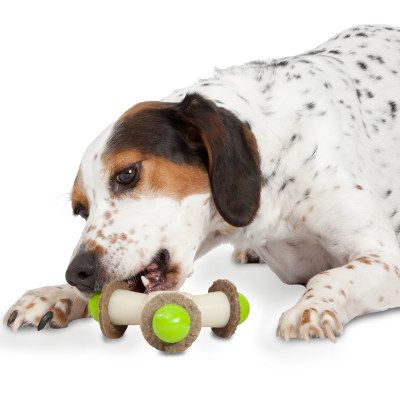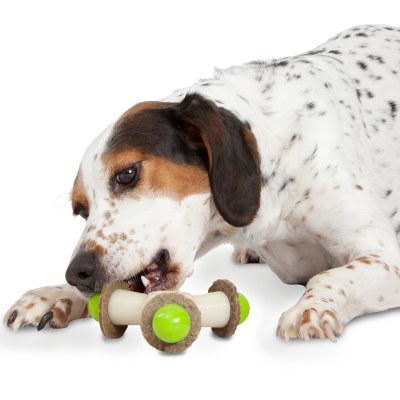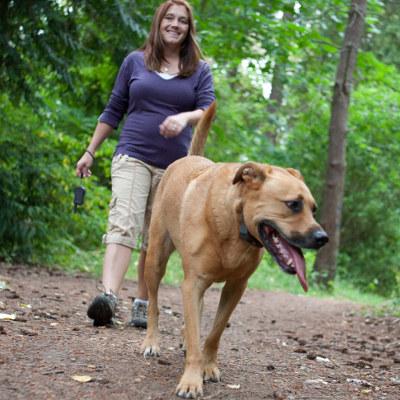The inability to hear is a challenge not just for humans but also for the dogs who love them. You may notice that over time your dog may lose his or her hearing. Unfortunately, there are breeds prone to genetic deafness, including the Dalmatian. Dogs can lose hearing as a result of ear infection, accidents, or a host of other causes.
When adopting a puppy, it is wise to take a few moments to test that she can hear. If a hearing-impaired pup sees her brothers and sisters rush meet a newcomer, she may tag along just from that visual cue. It’s important during adoption to isolate a puppy and test their hearing. In a separate room, make an appropriate sound when she’s looking away or distracted. Prove to the best of your ability that the animal can hear before adding her to your family.
Or you may choose to adopt her anyway, in spite of the fact that she cannot hear. Many wonderful people do so every year, understanding that their new relationship will require some special communication efforts. With an open mind and warm heart, an hearing-impaired dog can be a terrific addition to your family.
 Those Adoring Eyes
Those Adoring Eyes
“If most dogs offer unrequited love, then deaf dogs are in the top percentage! Because of their disability, their eyes follow you everywhere. They are grateful for play and contact. For me they are a joy to train,” says Tom Clements. He co-stars with wife Mary and more than a dozen high-energy performing dogs in his show, Mutt-allica. The troupe has performed for more than 10 years throughout the U.S.
Tom explains that frequently, the dog makes up for its lack of hearing by focusing on you more. In other words, she may watch your every step. Some new pet parents can be unnerved by this constant attention. Others come to welcome their dog’s steady gaze. Dogs learn to watch the face, and especially the eyes of the person they respect.
Basic Training with Hand Signals
With time, patience and training, deaf dogs can easily learn to recognize hand signals.
- Begin with some fun play for a few moments.
- Show your dog the hand signal for Good Dog, followed with a tasty treat and some physical pats and affection. Many use the popular thumbs up as a universal sign for Good Dog. Show the signal again, and repeat the process.
- Continue for a few minutes or until your dog shows signs of tiring or disinterest.
- Pick up the same exercise later in the day or the next day.
- In time, add signals for No, which could involve shaking your head and cutting off the eye contact.
- Move on to the big 3: Sit, Stay, and Come. Remember: physical praise, patience, and repetition.
You Are Not Alone
For better communication at a distance, or when a dog is distracted, consider a remote training collar. Vibration and static stimulation collars are a great option. At the press of a button, you deliver a vibration or a low-level tingle which gets her attention. With your repetitive training, she’ll learn to associate the stimulation with looking up and finding you. Collars are available with a range of light touch levels. You can use the systems almost as a pet pager!
Tom Clements used a remote trainer in working with his deaf border collie puppy. “I used a remote training collar that has a vibration feature. It’s been a lifesaver! We started at home, and I taught her to come to me when she feels the vibration. We moved on to the field, and now with a quick push of the button, she stops everything to come to me.”
“We made amazing progress over the initial months. I’m sure my pup would claim all the credit! But for me, compared to my efforts in training other dogs, it was the quickest, most stress free experience I’ve had," Tom says.
Whether you are considering adopting a deaf dog or your dog loses hearing over time, be assured that there are people like you that have met this challenge. Talk to your vet and check the internet for deaf dog resources that can put you in touch with people that can help.
A surprising bonus: You may find that your hearing-impaired dog learns faster than other dogs you’ve had. Because the learning dog has fewer audible distractions, they may stay focused and more attentive to you, their training partner. Quicker learning means you’ll have more time for play, for affection, and for love.



